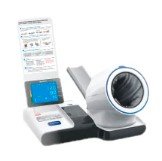Training and Education Programs for Phlebotomists: Enhancing Cultural Competence and Patient Care Skills in the United States
Summary
- Training and education programs are essential for phlebotomists to improve cultural competence and better serve diverse patient populations in the United States.
- Understanding cultural differences and being able to effectively communicate with patients from various backgrounds is crucial in providing quality healthcare.
- There are specialized courses, workshops, and certifications available for phlebotomists to enhance their cultural competence and patient care skills.
Introduction
Phlebotomists play a crucial role in the healthcare system by collecting blood samples for medical testing, transfusions, research, and donation purposes. In the United States, with its diverse population, it is essential for phlebotomists to have cultural competence to effectively communicate and provide care to patients from different backgrounds. Training and education programs are available to help phlebotomists improve their cultural competence and better serve diverse patient populations.
Importance of Cultural Competence
Cultural competence is the ability to understand, communicate with, and effectively interact with people across different cultures. In the healthcare setting, cultural competence is essential for providing quality care to patients from diverse backgrounds. It helps phlebotomists to:
- Build trust and rapport with patients.
- Understand patients' beliefs and values related to health and illness.
- Provide care that is respectful and sensitive to cultural differences.
Challenges Faced by Phlebotomists
Phlebotomists may encounter challenges when working with diverse patient populations, including:
- Language barriers: Difficulty in communicating with patients who speak different languages.
- Cultural differences: Misunderstandings or conflicts due to differences in beliefs, traditions, and practices.
- Health disparities: Patients from minority groups may face barriers to healthcare access and quality.
Training and Education Programs
Several training and education programs are available for phlebotomists to improve cultural competence and better serve diverse patient populations. These programs aim to enhance phlebotomists' communication skills, cultural awareness, and understanding of healthcare disparities. Some of the options include:
Cultural Competence Courses
These courses focus on developing phlebotomists' understanding of different cultures, beliefs, and values. They also cover topics such as effective communication, cultural sensitivity, and patient-centered care.
Language Skills Workshops
Workshops that focus on improving language skills can help phlebotomists communicate more effectively with patients who speak different languages. These workshops may include basic language classes or training on medical terminology in other languages.
Certifications in Healthcare Interpreting
Phlebotomists can pursue certifications in healthcare interpreting to become qualified medical interpreters. This allows them to bridge the language gap between Healthcare Providers and patients who speak limited English or belong to non-English speaking communities.
Courses on Health Disparities
Understanding health disparities and their impact on patient care is crucial for phlebotomists. Courses on health disparities provide insights into the social determinants of health, healthcare access issues, and strategies to address disparities in healthcare delivery.
Benefits of Cultural Competence Training
Investing in cultural competence training for phlebotomists can have several benefits for both Healthcare Providers and patients:
- Improved Patient Satisfaction: Patients feel more comfortable and respected when their cultural background is acknowledged and understood.
- Enhanced patient outcomes: Effective communication and culturally sensitive care can lead to better health outcomes for patients.
- Reduced healthcare disparities: By addressing cultural and language barriers, Healthcare Providers can help reduce disparities in healthcare access and quality.
Conclusion
Cultural competence is essential for phlebotomists to effectively communicate and provide care to diverse patient populations in the United States. Training and education programs are available to help phlebotomists improve their cultural competence and better serve patients from different backgrounds. By investing in cultural competence training, phlebotomists can enhance patient care, improve health outcomes, and reduce healthcare disparities.

Disclaimer: The content provided on this blog is for informational purposes only, reflecting the personal opinions and insights of the author(s) on the topics. The information provided should not be used for diagnosing or treating a health problem or disease, and those seeking personal medical advice should consult with a licensed physician. Always seek the advice of your doctor or other qualified health provider regarding a medical condition. Never disregard professional medical advice or delay in seeking it because of something you have read on this website. If you think you may have a medical emergency, call 911 or go to the nearest emergency room immediately. No physician-patient relationship is created by this web site or its use. No contributors to this web site make any representations, express or implied, with respect to the information provided herein or to its use. While we strive to share accurate and up-to-date information, we cannot guarantee the completeness, reliability, or accuracy of the content. The blog may also include links to external websites and resources for the convenience of our readers. Please note that linking to other sites does not imply endorsement of their content, practices, or services by us. Readers should use their discretion and judgment while exploring any external links and resources mentioned on this blog.
